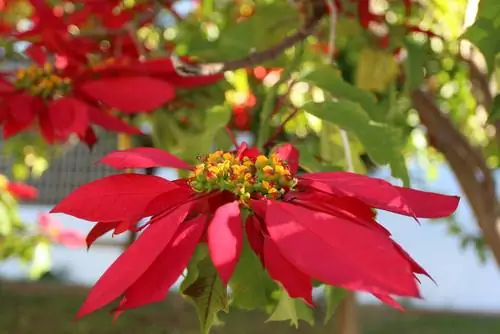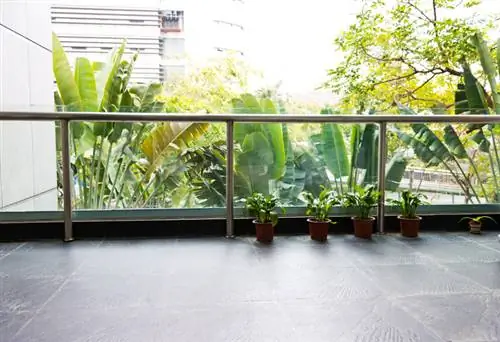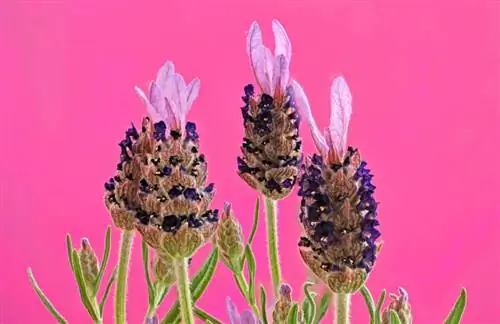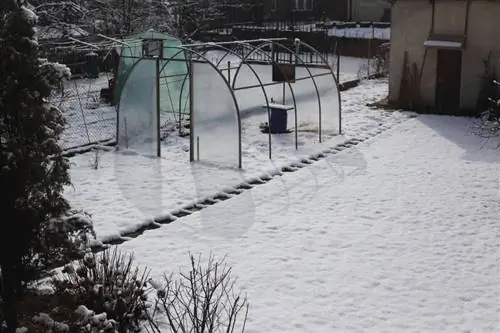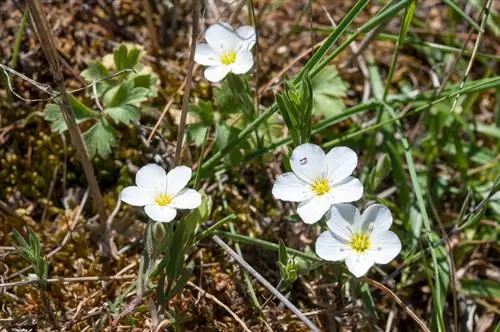- Author admin [email protected].
- Public 2023-12-16 16:46.
- Last modified 2025-01-23 11:21.
During the Christmas season, the Advent star with its brightly colored bracts provides festive accents in many homes. You get this plant in the classic red-green color, occasionally sprayed with small glitter particles. New breeds ensure an interesting variety of colors, ranging from white to salmon to mashed.

What are the characteristics of a poinsettia?
The poinsettia (Euphorbia pulcherrima) is an evergreen shrub with bright bracts in red, salmon, white or pastel. The main flowering period is between October and January. The plant is poisonous and should not be consumed by pets.
Plant profile:
- Botanical name: Euphorbia pulcherrima
- Order: Malpighian-like
- Family: Spurge family
- Genus: Spurge (Euphorbia)
- Growth: Evergreen shrub.
- Growth height: Depending on the pot size, fifty centimeters to one meter.
- Main flowering period: October to January
- Leaf: Egg-shaped, pointed, lanceolate, strong green.
- Bracts: deep red, salmon, white or pashed.
- Flowers: Small umbels
- Flower color: yellow-green.
Special features:
Attention: The poinsettia is poisonous. As with all spurge plants, the plant sap contains skin-irritating components. If pets such as cats, rabbits or birds nibble on the leaves, symptoms of poisoning can occur.
Origin:
The Advent star originally comes from South America, where it can be found as a sprawling shrub up to six meters high. The fact that the plant only reaches a limited size in our homes is due to chemical inhibitors and the limited root space provided by the pot.
Location and care:
The poinsettia prefers a warm and bright location, but not direct sun. In winter the temperature should not fall below twenty degrees. In summer you can care for it in a sheltered, sunny place outdoors, where the temperature can reach up to thirty degrees.
Watering and fertilizing
You do not need to fertilize the poinsettia in the first few weeks. It is sufficient to water the attractive plant with stale, room temperature water so that the root ball does not dry out. However, avoid waterlogging, which quickly leads to root rot.
Oversummer
It would be a shame to put the poinsettia in the compost after the holidays, because it can easily be cultivated all year round. To do this, cut it back vigorously in April, regardless of whether the bracts have already fallen off.
Then repot the Advent star, water it a little more generously and, after sprouting, start fertilizing it weekly with commercially available liquid fertilizer. In early summer you can trim the small shrub to ensure bushy growth.
The Advent star star sprouts new bracts as soon as daylight reaches the plant for less than twelve hours. If you want to enjoy the splendor of colors on time during Advent, you can simulate this rhythm by placing a cardboard box over the poinsettia from early evening until morning.
Diseases and pests
If the air in the room is too dry, whiteflies, mealybugs or scale insects occasionally colonize the Advent star. Therefore, ensure there is sufficient humidity. The pests can be easily treated with commercially available products.
Tip
Even the glow of street lighting can prevent the poinsettia from producing new bracts. This is especially true when the lighting in a room is switched on, even if it is only used for a few minutes. In order to stimulate the growth of the bracts, the plant must be completely dark for at least twelve hours.

